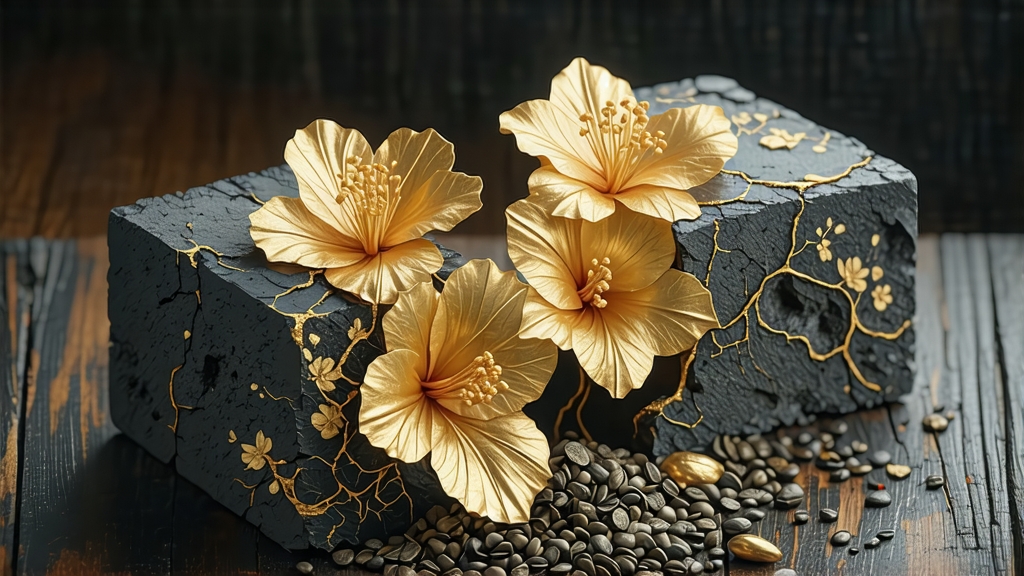
Tucked away in the mountainous northwest of Hunan Province, the small city of Anhua has been guarding a secret for more than five centuries. While the world celebrates the emerald elegance of Dragon-Well or the muscatel magic of Keemun, a darker, earthier treasure has been quietly fermenting in bamboo-lined warehouses along the Zi River. Locals call it “Fu zhuan cha”—literally “Fu brick tea”—a member of the Hei Cha (dark tea) family whose compacted body hides a constellation of microscopic golden specks that look like powdered sunlight. Those tiny blossoms are Eurotium cristatum, a harmless mold that turns an already complex tea into something approaching liquid history. To understand Fu brick is to travel the Ming dynasty caravan routes, to taste the humidity of cave storage, and to witness how microbes and merchants conspired to create one of China’s most misunderstood beverages.
Historical footprints
The story begins in 1368, the first year of the Ming, when the imperial court decreed that Sichuan and Hunan should supply border garrisons with tea in exchange for war-horses. Compressed tea was easier to transport across the wind-scoured plateaus of Tibet and Mongolia, so brick-shaped teas became the de-facto currency of the “Tea-Horse Road.” Anhua’s highland valleys offered two advantages: abundant mountain mist that kept tea leaves supple, and a naturally occurring strain of mold that colonized the bricks during the month-long journey west. By the late Ming, caravanners noticed that bricks stored near humid riverbanks developed a golden bloom and a mellow, hay-sweet aroma. Rather than discard the “spoiled” cargo, Tibetan monks brewed it and found that it settled stomachs soured by yak-butter rations. Word traveled back to Hunan: the mold was not a flaw; it was the signature. Thus Fu brick was born—named after the “Fu” postal station in Jingyang county where bricks were weighed and taxed before entering the Silk Road.
From leaf to brick: a choreography of steam and spores
Fu brick starts life as a coarse, late-spring pluck of Anhua large-leaf cultivar—standard grade, fourth or fifth leaf, thick stems included. The first step is “killing green” in a 200 °C wok for ninety seconds, just long enough to halt oxidation enzymes while preserving leaf toughness. After a brief rest, the leaves are piled into 1.5-meter heaps, sprayed with spring water, and covered with hemp cloth. Inside this sauna the temperature climbs to 55 °C; over the next twelve hours the pile is turned four times to homogenize moisture and encourage thermophilic bacteria. This “wet piling” phase, shared with Yunnan shou puer, lasts only twenty-four hours—short enough to retain some green vigor yet long enough to seed the leaf with microbial life.
Next comes the compression, unique to Fu brick. Partially fermented leaves are steamed for eight seconds, just until limp, then tipped into a 5 kg iron mold lined with cotton paper. A hydraulic press exerts 25 metric tons of pressure for six minutes, squeezing the leaf into a dense 35 × 18 × 4 cm brick scored on the back with twenty parallel grooves that aid later ventilation. The bricks are then stacked inside a subterranean “flower room” whose walls are blackened by decades of spores. Here temperature is held at 28 °C and relative humidity at 75 % for twelve to fifteen days. In this hothouse Eurotium cristatum germinates, its filamentous hyphae weaving through the leaf matrix and exuding enzymes that convert cellulose into soluble sugars and polyphenols into theaflavins. When the golden spots—locally dubbed “golden flowers” (jin hua)—reach a density of 50,000 per gram, the bricks are moved to a drier loft where moisture is gradually reduced to 10 %. The entire cycle, from pluck to packed crate, takes eight months, three times longer than most black teas but half the aging curve of raw puer.
Anatomy of a golden flower
Under a 400× microscope each golden flower resembles a dandelion seed head: a central vesicle surrounded by radiating conidia. These spores secrete α-amylase and β-glucosidase, enzymes that chop long-chain starches into maltose and glucose, accounting for Fu brick’s characteristic honey